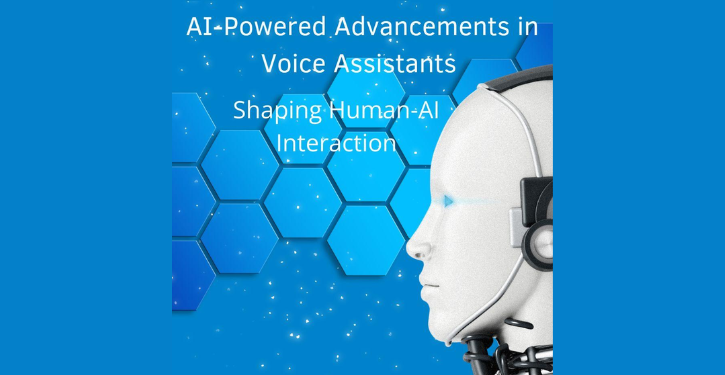AI-Powered Advancements in Voice Assistants: Shaping Human-AI Interaction

In the evolving landscape of artificial intelligence (AI), the role of emotional intelligence in voice assistants stands as a transformative frontier. Author Ankur Binwal, known for his insights in AI integration and innovation, explores the potential of emotionally aware voice assistants in enriching user experiences. His examination highlights groundbreaking strides in human-AI interaction that are reshaping daily digital engagement.
Enhancing Communication with Emotional Intelligence
The integration of emotional intelligence in voice assistants marks a major advancement in AI development. Historically, these systems were limited to processing commands and offering factual responses. However, with breakthroughs in natural language processing (NLP) and machine learning, voice assistants now have the ability to detect and adapt to the emotional tone of users. This evolution allows them to respond with empathy, enhancing user interaction by creating a more human-like and relatable experience. Consequently, these emotionally aware voice assistants shift from simple information providers to trusted, engaging companions, fostering deeper user satisfaction and building long-term trust.
Improving Contextual Understanding
Contextual understanding is a key innovation in modern voice technology. Advanced AI algorithms empower voice assistants to retain memory of past interactions and customize their responses based on user history and preferences. This capability allows the systems to interpret contextual cues effectively, fostering more natural, coherent conversations that mimic human interaction. As a result, users experience smoother, more intuitive interactions that feel less mechanical and more personalized. This progression illustrates how voice assistants are moving beyond basic query-response functions toward dynamic, engaging dialogue, thereby significantly enhancing user engagement and satisfaction.
Sentiment Analysis for Enhanced Personalization
Sentiment analysis plays a vital role in making voice assistants more intuitive and user-friendly. By evaluating the emotional undertones in a user’s voice, these systems can tailor their responses to match the mood of the interaction. For example, if an assistant detects stress or frustration, it can modify its tone to deliver calming and supportive feedback. This sophisticated level of personalization enhances the overall user experience by making interactions feel more empathetic and genuine. Such responsiveness boosts user comfort, fostering trust and promoting long-term engagement and loyalty to the technology.
Ethical Considerations in Emotional AI
The integration of emotional intelligence in voice assistants brings important ethical considerations to the forefront. Issues such as data privacy, informed consent, and potential user manipulation need to be addressed to ensure responsible use. Developers must navigate the balance between driving innovation and safeguarding user rights, ensuring that emotionally aware systems operate transparently and adhere to ethical standards. Establishing trust hinges on secure, clear data management practices that prioritize user protection. Upholding these principles is vital to maintaining public confidence and fostering responsible development in this evolving technology.
Adaptive Learning Capabilities
Adaptive learning empowers voice assistants to enhance their responses by continually refining their understanding of user behavior. Leveraging advanced machine learning algorithms, these systems evolve dynamically, improving accuracy and contextual awareness with every interaction. Over time, voice assistants can learn users’ preferred communication styles, frequently discussed topics, and habitual interaction patterns. This enables the system to anticipate needs and provide more relevant, personalized responses. Such tailored engagement fosters deeper connections, creating a more intuitive and satisfying user experience that adapts seamlessly to individual preferences and promotes long-term user satisfaction and loyalty.
Challenges and Future Directions
Emotionally intelligent voice assistants offer immense potential but face notable challenges. Achieving seamless, empathetic interactions demands advanced data models and significant processing power. Additionally, creating inclusive algorithms that recognize diverse speech patterns and emotional expressions is crucial for fair and comprehensive user experiences. Overcoming these obstacles while nurturing innovation will shape the future of human-AI interaction. Integrating emotional intelligence into voice technology could revolutionize user engagement, setting new standards for interactive design. This evolution would make technology interactions more natural and personalized, enhancing overall user satisfaction and redefining how digital assistants are conceived and utilized.
In conclusion, Ankur Binwal’s analysis underscores that emotional intelligence in voice assistants is more than a technological leap—it’s a reimagining of digital companionship. By merging human-like understanding with AI-driven precision, voice technology is poised to enhance personal connections, ensuring that interactions remain meaningful and human-centric.





